Jan28 we drove to the Sand Dunes Hotel in Hokianga, which is a large harbor on the west coast, still north of Auckland. The harbor has a wide mouth, full of sand bars that move around, so the entrance can be treacherous.
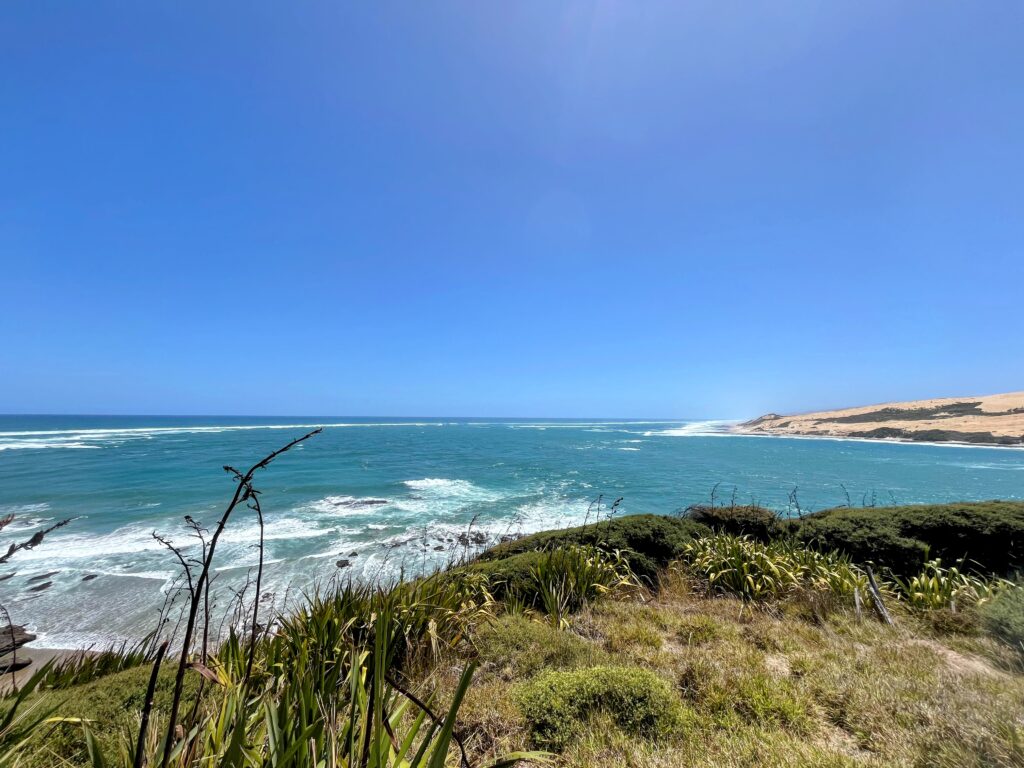
Still, this area was the center of the timber industry for many years due to the huge Kauri forrest. Kauri trees can live over 3500 years and grow very fast and straight for the first hundred years. They were prized for masts and spars for the British navy (really, all ship building of the day).
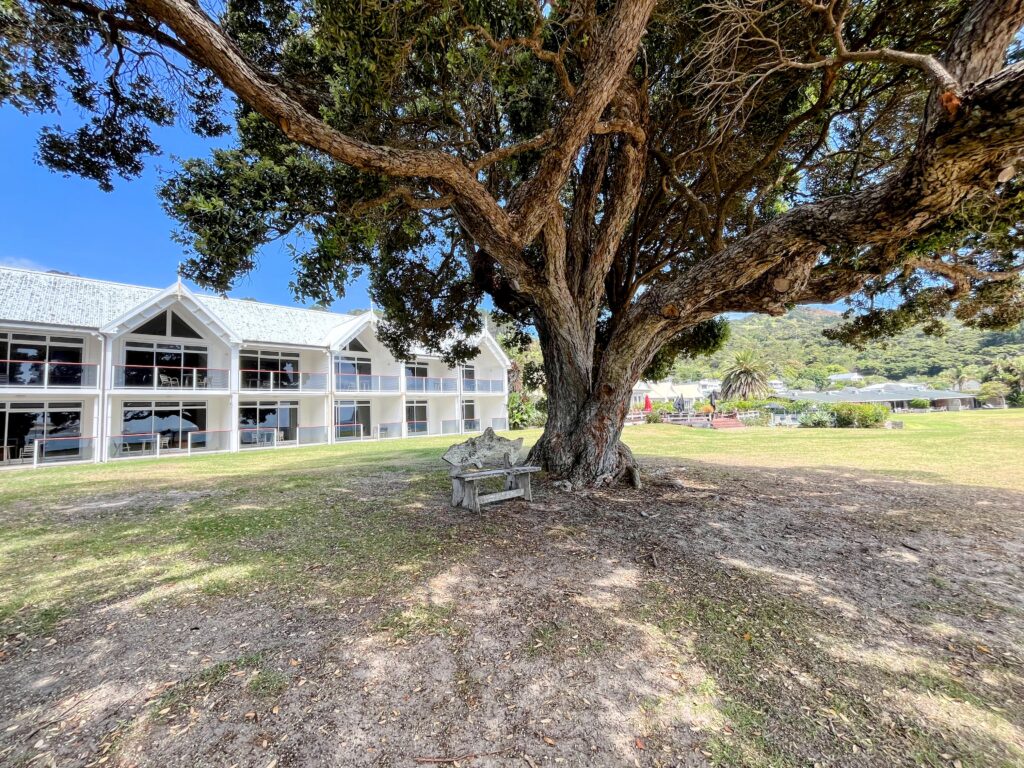
The hotel was OK. So-so room in a great location. We could step out the back of our room, across a lawn and right down to the beach. And we had a wonderful view from the room.
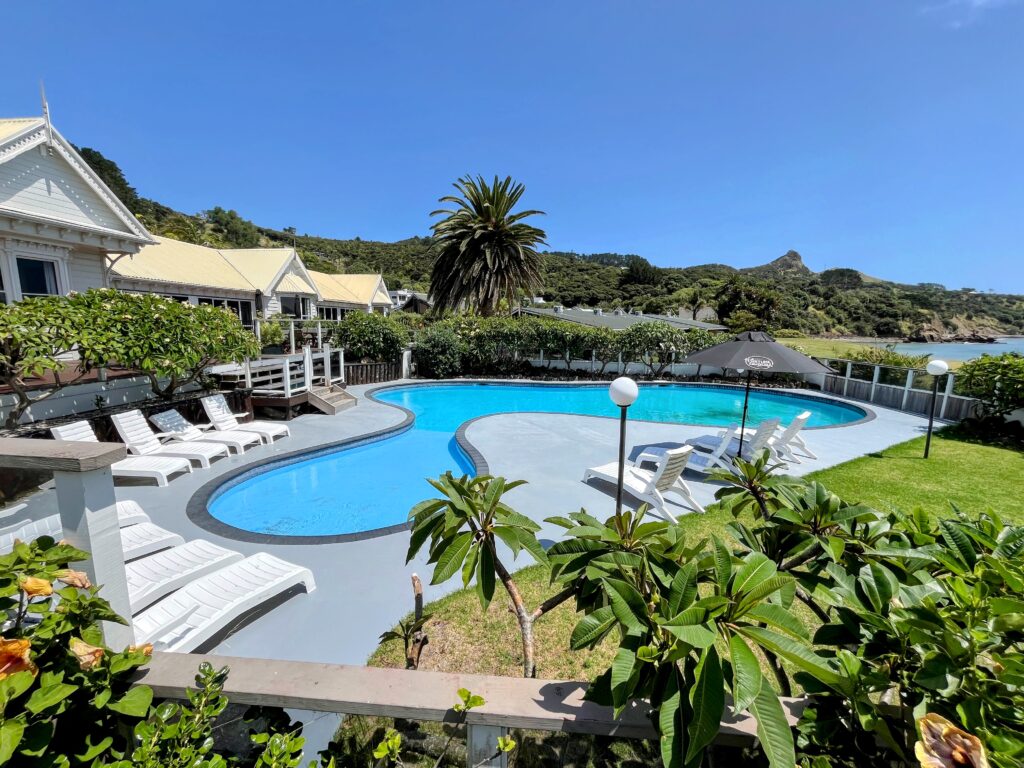
And a pretty nice pool as well! 🙂
That evening we had a tour of the Kauri forest. Kevin, our guide, is a local with a very strong sense of connection to the land, sea and especially the forest. He considers all things in nature to have a spirit, and that the trees, especially the very old Kauri trees, to have wise and valuable spirits. He works for the private group that owns and maintains the forest. There is only about 1% of the original old growth forest left in NZ, and this forest contains the majority of that irreplaceable resource.
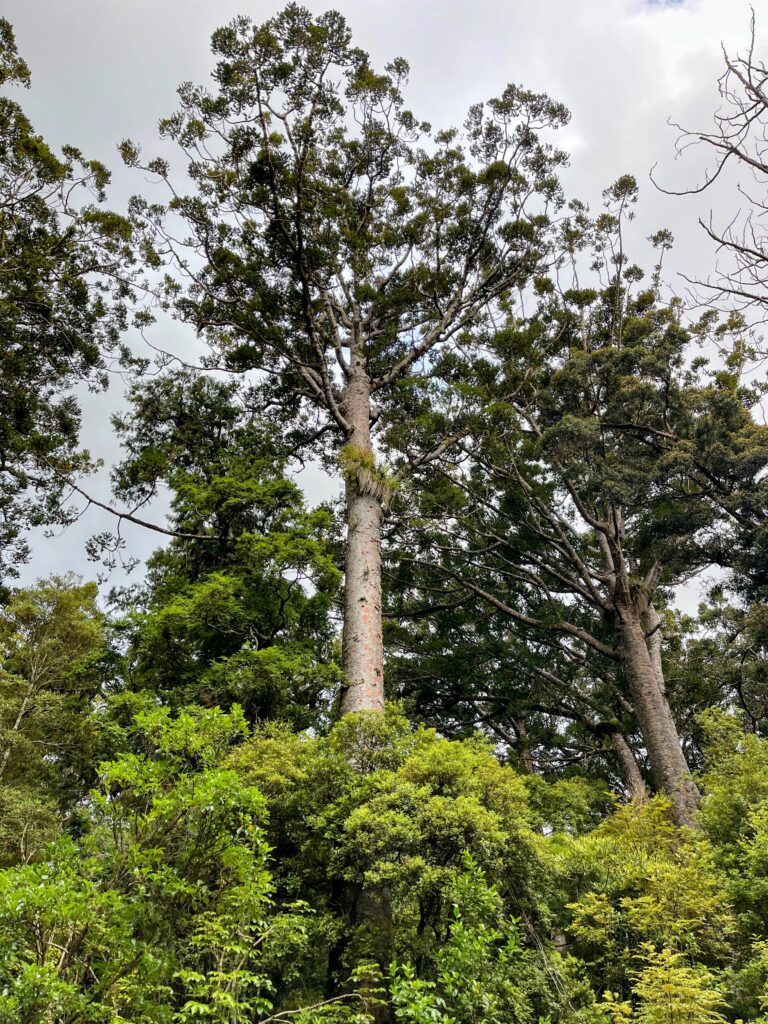
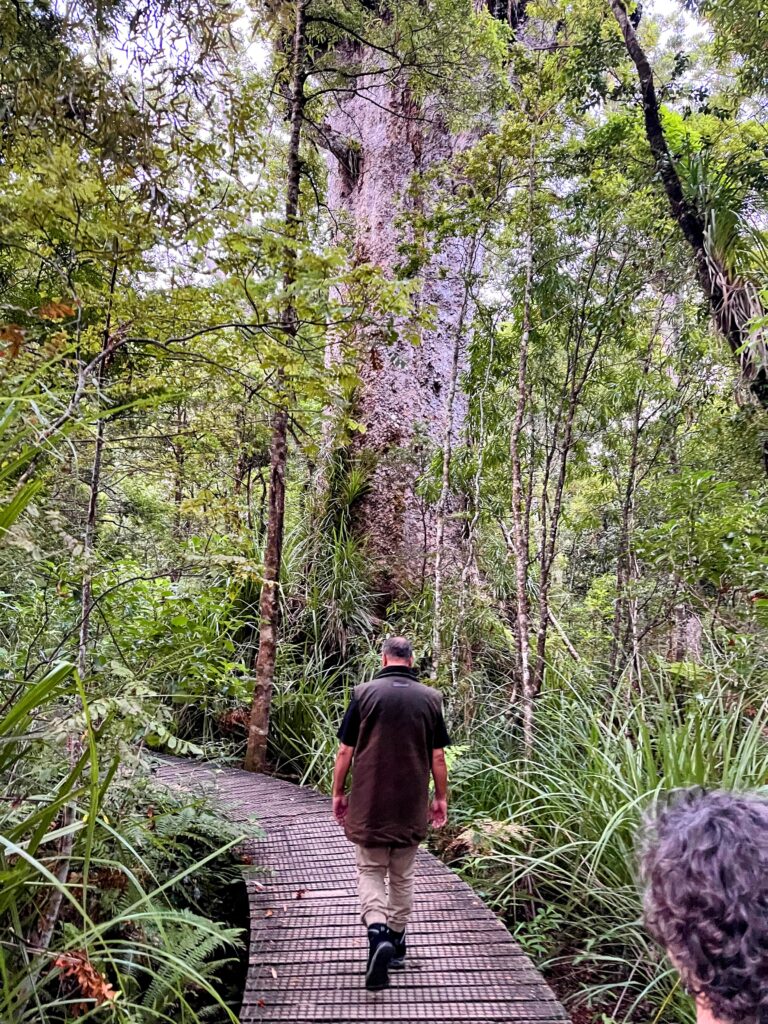
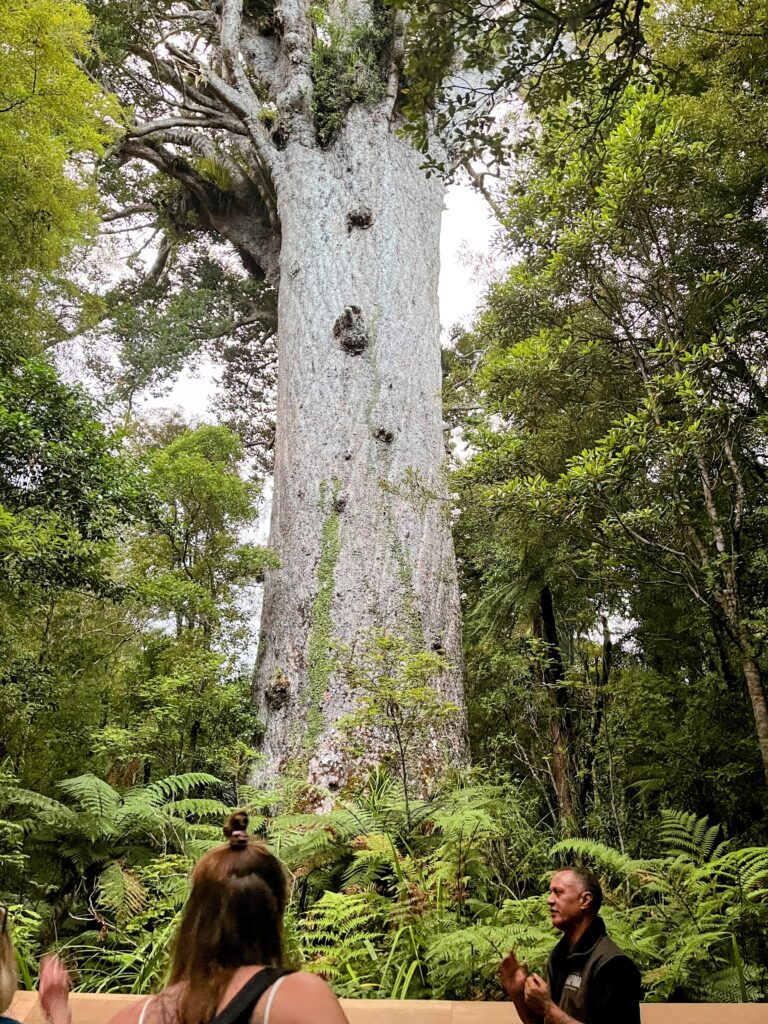
Tane Matua or “Lord of the Forest” is about 2000 years old. Kevin is talking about how many of the trees are being killed by a fungus responsible for ‘Kauri die-back disease’ and how this is being fought.
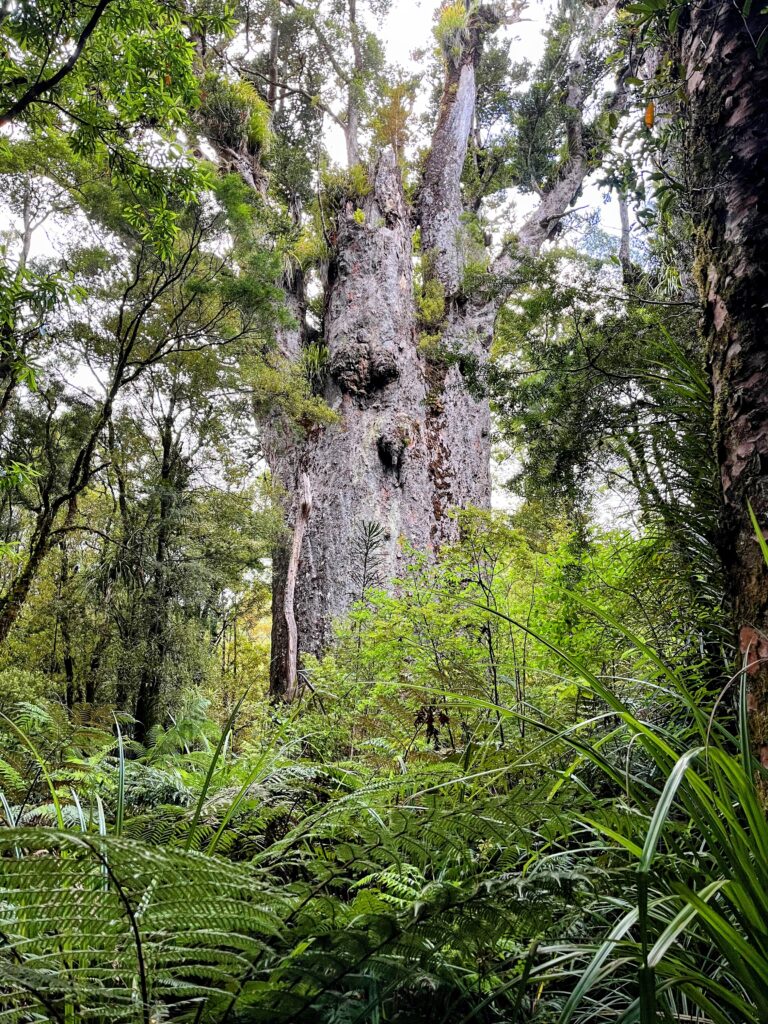
Te Matua Ngahere or “Father of the Forest” is about 3,500 years old and is the oldest known living thing in NZ. Its trunk is over 16 meters in circumference.
The next day we went to the “Footprints of Kupe Experience”. They have a museum with a number of artifacts and many screens with images and audio explaining much of the history of the area. Then, there is a local, dressed in traditional clothing (sorta) who takes you on a walk through carvings that depict things important to the history and mythology of the Maori people.
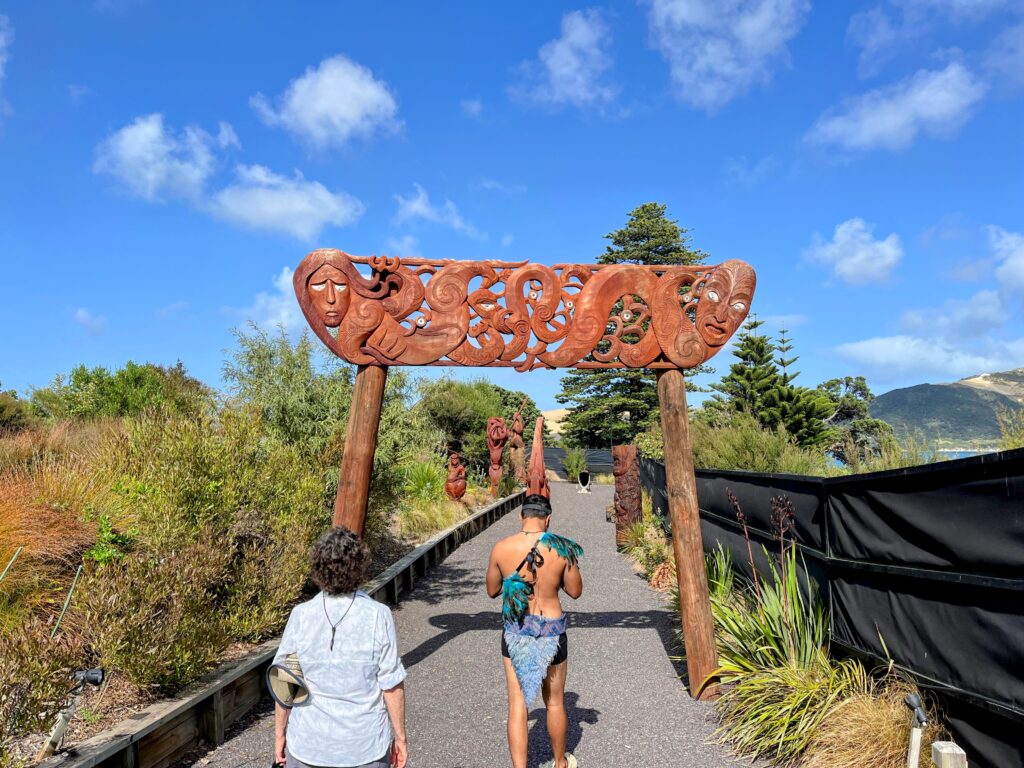
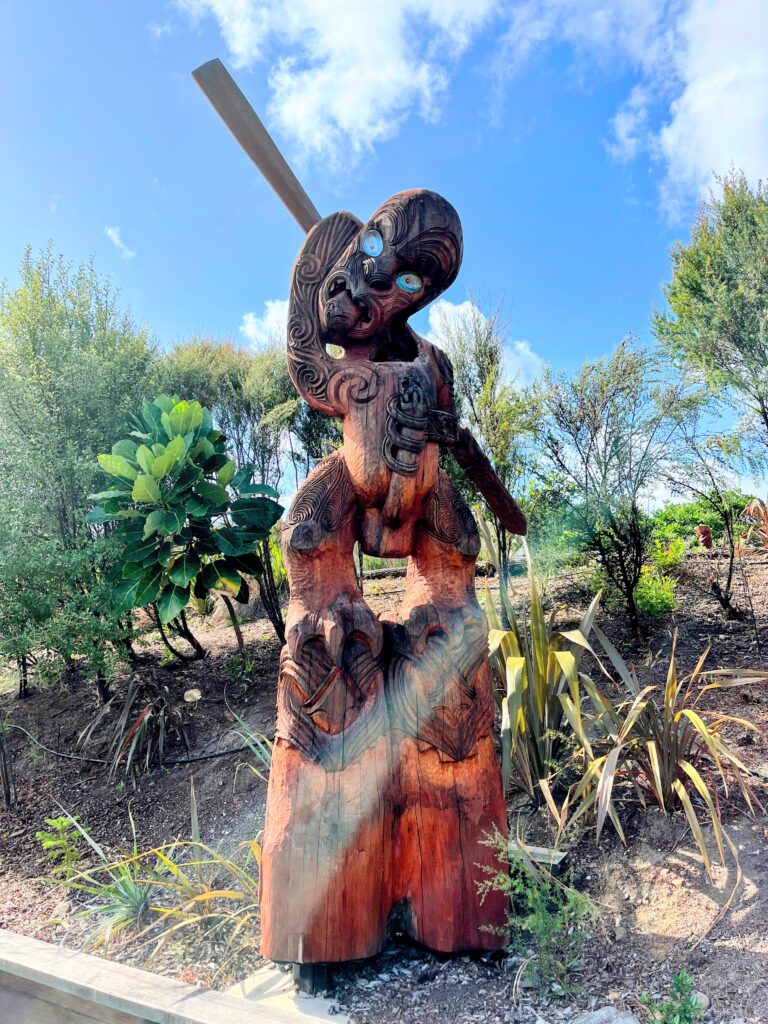
Tumatauenga, the Maori God of War. Not a very cuddly, friendly looking guy.
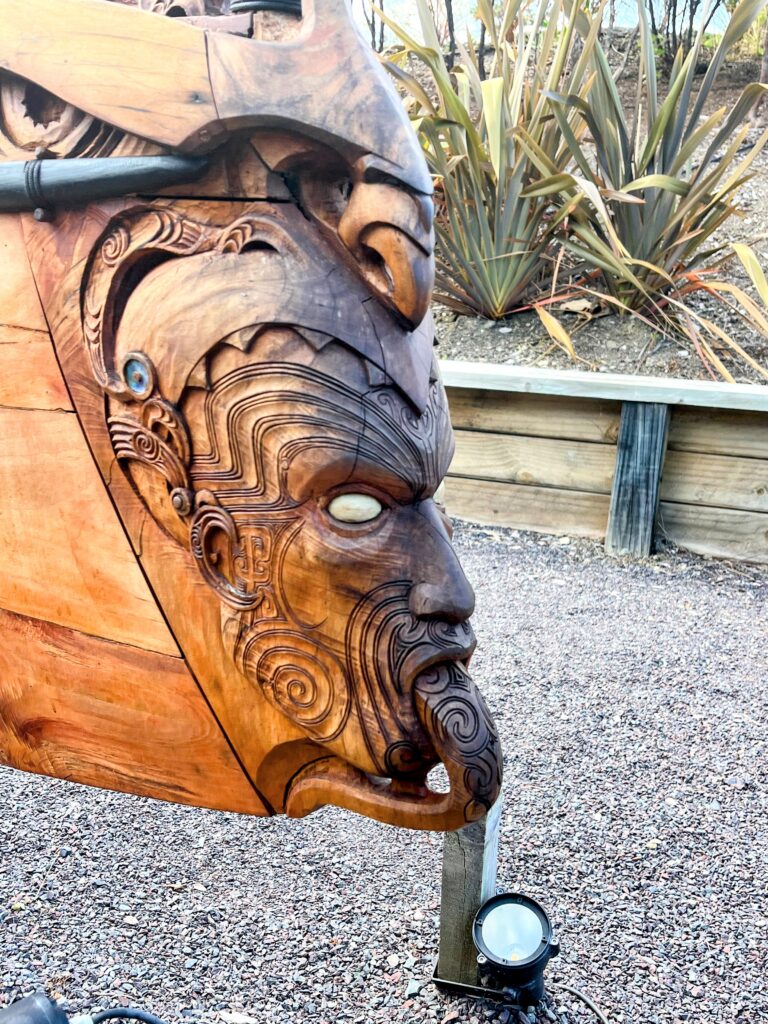
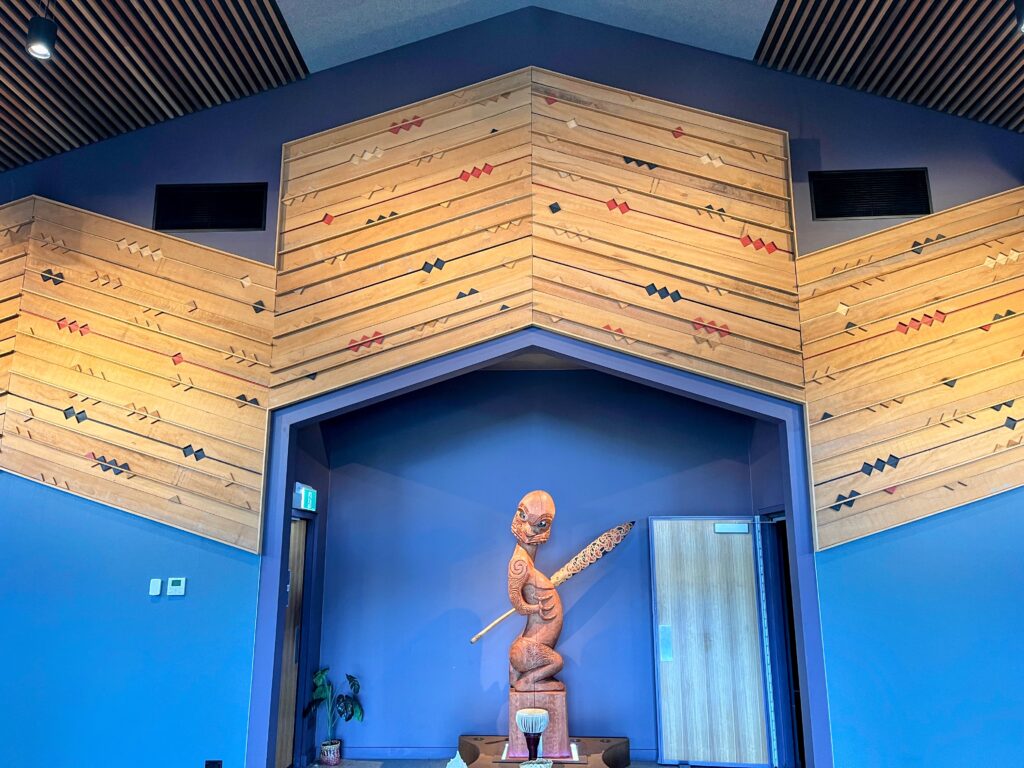
Kupe led the first group of people to settle in NZ. They left Polynesia because things were getting crowded and wars over resources were becoming increasingly common. He decided that looking for a new home was a better option than continual warfare. After a long and difficult journey, they landed in Aoteroa, The Land of the Long White Cloud, now also known as New Zealand. After a number of years, the settlement was doing well, and Kupe took one boat and a few people back to Polynesia. He taught his grandson how to find Aoteroa and this began a short period of voyages between Aoteroa and Polynesia, with more migration to the new land.
The sculpture above depicts Kupe with a paddle which has an engraving of a giant octopus that battled Kupe on the voyage. Above the sculpture we see many diamond shapes. The black diamonds represent ancestors past. The red are Maori alive today, and the white are Maori yet to be born. All these spirits are tied to these islands.
It’s always amazing to see examples of Nature that are so ancient — and sad so many of them are disappearing.
Fascinating! Have you found any single men for me? So much to discover.
Deb – Yes, many big rugby players that you might like!